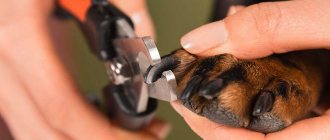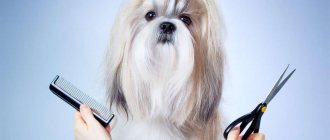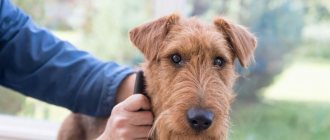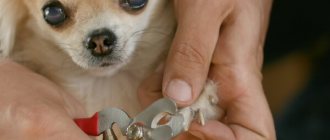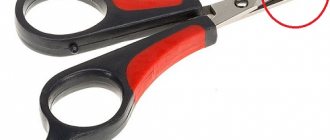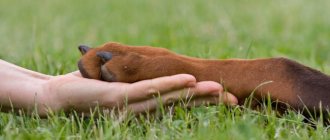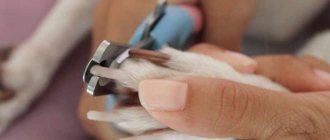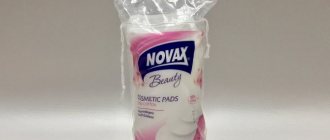Caring for a pet dog is a constant thing and necessary not only for maintaining a pleasant appearance of the animal. The beauty of the breed is maintained by full grooming. Many people think that simply washing and cutting their pet’s fur is enough. This is not enough: you need to take care of your paws and learn how to cut your dog’s nails. Why this is needed and how to do it correctly at home is described below.
Do dogs need to have their nails trimmed?
The house does not have a naturalistic floor covering, to which the paws of any animal are accustomed. Over the millennia of living with humans, a dog has not ceased to be an animal whose claws must be regularly ground down on the surface. If you walk on the asphalt and sidewalk for a long time, the claws will be partially renewed, but it is naive to expect that this will solve all the problems.
global $ads_google; //data-ad-slot=”2475549904″ $ads_google = empty($ads_google) ? false : true; ?> if ($ads_google == false) {?>
$ads_google = true; ?> } ?>
The nail grows, the dog feels discomfort when walking and running. If the claws grow too long, they break off easily, sometimes very badly. It already hurts! If a small piece breaks off, there will still be a wound through which infection is possible.
The claws constantly grow and the dog becomes uncomfortable walking. The owner may not notice the gradual changes, but the animal's walking will gradually change. The reason for this will be the developing deformation of the musculoskeletal system, from the paws to the skeleton.
On the “fifth toe” of a dog’s paw there is a tribute to evolution and ancestors - a vestigial claw. It is not functional in the dog’s “real” world, but it can curl and dig into the skin. It hurts too.
Long claws often peel off and break when playing. Separately, we would like to add that when communicating with a dog, claws also cause discomfort to people, because they can easily injure human skin. If the claw is broken off, the scratch will be more serious.
Things also deteriorate from contact with overgrown and broken claws. The dog's clicking on the floor can even become annoying. Therefore, the question of whether to trim a dog’s claws will still come up.
Which breeds need their nails trimmed is also a good question. Small breeds that are carried on the hands or pads for most of their lives have their nails trimmed regularly. Poodles, basset hounds, boxers and other medium-sized breeds also need pruning, but less frequently. Dogs with an active lifestyle should not be disturbed. Animals that spend a lot of time running on hard asphalt are great at doing their own nail polish.
Disputes about the need for this type of grooming are ongoing among amateurs and professionals. Despite the obvious explanations, someone remains opposed to the procedure. This can partly be explained by the stress that the dog experiences when its paws are treated.
Many people are also concerned that an improperly done haircut opens the door to infections. Although the key word remains “wrong”
Opponents of dog manicure are starting to have problems - the result of ignoring the need to grind down their claws.
Features of use
Tools for cutting claws must be used very carefully. If the animal resists, then you should not try to cut its nail plate alone. A sudden movement made by a dog or a person trying to avoid a bite can lead to the most unpleasant consequences.
It is better to use scissors or a guillotine together, one holds the dog by the rump, periodically stroking it, the second cuts the claws. Before each use, the instrument is disinfected.
Attention! Although the risk of injury is minimal, you should always keep hydrogen peroxide and iodine on hand.
Is a haircut often necessary?
You are unlikely to hear a clear and unambiguous answer on the frequency of trimming nails even from a veterinarian. The age of the animal, its lifestyle, the level of street activity and the surface on which the dog moves most of the time are taken into account.
The comfort of apartments with their laminate, linoleum or parquet means that the dog’s nails will have to be trimmed quite often.
With an active outdoor lifestyle, with walking on hard surfaces, the dog will not need frequent nail trimming. In this case, the natural grinding process will correct everything itself.
global $ads_google; //data-ad-slot=”2475549904″ $ads_google = empty($ads_google) ? false : true; ?> if ($ads_google == false) {?>
$ads_google = true; ?> } ?>
Veterinarians can answer in more detail: the blood vessels that are in the claw grow with it. The less often you cut, the easier it will be to damage the vessel. The dog will definitely not appreciate such “care” then.
Why you need to choose a nail clipper carefully
If a dog nail clipper does not cope with its task, then your pet’s nails will wrinkle and peel. In this case, the tool is not suitable, you need to select another one.
Dog grooming scissors: thinning and curved options
Much depends on the size of the tool and how long it has been in use. Some owners try to cut the nails of small dogs and cats with one nail clipper. But you shouldn't do this. The claws of even dwarf pets are denser and harder. A cat's tool can ruin them. You can try using it on puppies. If the nail becomes wrinkled, buy a suitable tool.
For your information! There are special accessories designed for small dogs.
Over time, the nail clipper becomes dull, the knives are no longer so sharp and also begin to wrinkle the nails. So it's time to update the accessory. You can always sharpen dull blades.
Structure of a dog's claw
Knowledge of anatomy is the primary task of any doctor. When an owner wants to intervene in his dog’s body, he also becomes a doctor in some way.
First, they wait for the moment when the dog is calmly lying nearby. They take the pet's paw and examine it. You need to understand what kind of claw shape your four-legged friend has.
There are three types of claws. Let's compare the description with what grows on your dog's paws:
- Curved: The claws look hard and arch-like;
- Hare, that is, straight. They are long and often sharp;
- Cats are arched in shape and have a curved tip.
Studying the types of claws will give you the answer to exactly how to approach their trimming.
A dog’s claws cannot in any way be equated to human nails - in our case, they are not a full-fledged part of the hand, unlike animals.
Claws have their own functions: they help keep the animal in balance and improve traction with any surface when moving. The dog digs the ground with them and uses them to protect itself. The owner’s task is to keep the blood vessels inside intact, removing only the overgrown tip.
If you do not pay attention to the shape of the claw, you can damage it when trimming it and cause pain to your pet. The claw bed must not be damaged; only the keratin cover, that is, the topmost covering, is cut and ground off.
Criterias of choice
There are several criteria for choosing a quality nail clipper. Pay attention to:
- blade - it must be sharpened so that the claw is cut and not compressed or peeled. A good nail clipper will have a blade that will leave an even and smooth cut. There should be no burrs on the cutting edges of the blade;
- handles - they must be strong and reliable. Choose models with rubber gaskets on metal handles. This way your fingers won't slip;
- Size – based not only on the size of the dog, but also on the size of your hand. The nail clipper should be comfortable to hold. A model that is too small will be inconvenient to use.
It’s good if the pet store allows you to try the chosen model in action. Take your pet with you and check how the tool cuts. If the claw is cut and not split, the steel is of high quality and well sharpened.
Which nail clipper to choose for a dog
Classic scissors should not be used, just like regular wire cutters. Dog handlers advise taking only a few specially designed tools to correct claws.
They can be purchased at veterinary pharmacies or pet stores. The device is called a claw cutter. It is this that will help you, with a light press, remove the dog’s claw to the desired length without splitting its surface. The size is selected based on the breed of the dog.
You can purchase several types of tools suitable for your favorite dog’s claws - first study the assortment, then make a choice. Buy special metal-reinforced scissors, a guillotine, tweezers or a machine. Devices made of steel or brass work well.
The handle of any cutting tool should be comfortable for the hand and rubberized - the process is tiring, especially the first time. Non-slip coating on the handles is necessary to prevent the hand from slipping and the dog from being injured.
Sharp blades without chips or nicks will quickly and easily cut off the tip of a claw, even the thickest one.
Special scissors
The scissors, which look so similar to garden pruners, have two blades. One is curved and looks like a hook. The blades are attached to two handles, making them easy and convenient to operate.
Models with a built-in limiter have an advantage, making grooming safer. They are used to cut small breeds of dogs, but large dogs have harder claws and the scissors may not be able to cut them.
global $ads_google; //data-ad-slot=”2475549904″ $ads_google = empty($ads_google) ? false : true; ?> if ($ads_google == false) {?>
$ads_google = true; ?> } ?>
Guillotine
The tool is named so because of its similar operating principle to a real guillotine. The plate has a slot for a claw and a lever handle. The action is simple - the levers are activated, and the claw is cut off instantly.
The guillotine comes in different sizes, so you can choose a tool for any dog, both tiny and huge in size.
Machine and other tools
A file is needed not only for grinding down a human nail. It is worth purchasing a hand file for filing cut dog claws. Immediately, small scissors are also purchased for your arsenal, always with rounded edges. They cut off the hair between the fingers. Dog grooming should be complete!
There is also a grinder for cutting nails. Despite its convenience, such a device also has a drawback. The machine works noisily, this sound frightens the animal or simply irritates it.
Grinding a claw takes longer than simply cutting it off. Not every dog will sit quietly and watch the “execution”. The clipper can injure the paw pads, and such a wound is more dangerous and serious than an incorrectly cut claw.
The convenience of the machine is that it has several attachments for claws of different hardness.
If you wish, you can buy several tools so that you can choose the most convenient one in the process.
Price issue
The cost of a dog nail clipper depends on many parameters. The price is affected by the material, type and size of the tool. The most budget models will cost 200-300 rubles, more expensive ones – 600-700 rubles, and prices for large pruners reach 1000-1500 rubles. The grinder can be found on sale at a price of about 1000 rubles.
When choosing a nail clipper, do not skimp. Trust well-known manufacturers with reliable products. Such a nail clipper will serve your pet for many years, and during use it will not injure him, because the blade will be of high quality. With cheap nail clippers, the cutting part will quickly become dull, and you will have to change the tool. Otherwise, the dog's claws will not be cut, but will flake off. High-quality steel will not rust quickly.
The other extreme is to take expensive professional tools that groomers use for home use. It is enough to choose a high-quality nail clipper from a reputable manufacturer in the middle price segment. A large selection of models for small and large dogs is available in online stores. If you buy at a pet store, then ask the seller to recommend the most popular model.
How to position and train your dog for nail trimming
If you decide to take full care of your pet, then grooming of the claws cannot be avoided. This means that you should immediately start accustoming him to a haircut. The dog must get used to the procedure from childhood. And since such manipulations cannot be avoided, you need not to be afraid yourself - your friend will get nervous if you worry.
You cannot be impatient or aggressive. The family's favorite will not be able to understand what they want from him, and will be even more afraid. The puppy may become nervous, begin to struggle, get angry and whine. Such a beginning of acquaintance with grooming will scare off the dog, and all subsequent procedures for caring for the animal will be viewed with hostility.
Hasty actions are excluded: the decision to do everything faster results in mistakes and pain for the animal.
First we establish psychological contact. The puppy should not be afraid of touching his paws, so a week before the “X” day, we begin to stroke his paws and touch the pads.
Sit more often next to the dog or near it - you need to be on the same level. While talking or playing, stroke the paws, pick them up, stroke the pads and claws. This will relax the dog, he will not see a threat in such touches in the future.
The haircut should be done at a moment of calm in the house, when the dog has eaten and generally looks content and peaceful. To begin with, the pet is walked so that all basic needs are met. When he gets some exercise and gets a little tired, his reaction to the procedure will be calmer. If this is a young dog or an active puppy, then walking before the procedure is mandatory!
They talk to the dog and pet it before and during work. There is no need to do anything with a restless dog!
Preparation
To ensure your haircut is successful the first time, prepare:
- Decide on a location. Large breed dogs will be more comfortable on the floor, while small four-legged friends may want to place a blanket on a table or other high surface. The dog needs to be introduced to the place at the stage of training him to trim his nails;
- Prepare antiseptic agents, cotton pads and a nail clipper with a nail file. Watch the video in advance and read the instructions on how to properly use the selected tools;
- Calm down, dogs feel nervous. If you or your dog have recently been stressed, it is better to postpone the procedure;
- Find a partner —it’s not only more fun together, but also more reliable. You may need help distracting your dog or restraining him during the procedure;
- Get the treat. Goodies should be on hand;
- Play it safe. If the dog is not familiar with the procedure, then put a short leash and muzzle on it. For small breeds, a thick diaper is useful, in which you can wrap your pet if he gets scared. By securing your pet, you will prevent possible injuries from sudden movements.
Trimming nails Before trimming your dog’s nails, you need to carry out the following hygiene procedures:
- Trim the hair between your toes if it gets in the way;
- Wash and dry your paws;
- Inspect the paw pads for cuts, wounds, cracks, or fungus. If inflammation or fungus is detected, haircuts are not performed. You need to contact a veterinarian for treatment;
- Treat tools with boiling water or antiseptic, and wash your hands with soap.
Advice. To check the operation of the nail clipper, practice on branches. This way you will understand the principle of operation of the tool and determine the cutting angle.
Proper nail trimming at home
You don’t have to rush into battle and trim everything on all paws at once! They start small and cut off one or two claws a day. Work is carried out only with disinfected tools. They prepare everything in advance so that the nail clippers are at hand at the right time.
The tool can be given to the dog to sniff and inspect several days before trimming. Such preliminary acquaintance will not scare off the dog when you first bring the already familiar device to his paw.
Process:
- Start talking to the dog. When contact is achieved, you can firmly take the paw in your hand, but do not squeeze. Otherwise, such an action will be perceived as violent, which means a threat.
- The thumb and index finger fix the dog's finger and lightly press on the place where the claw exits. You should not touch the place between the fingers, it is unpleasant for the animals.
- The claw must be disinfected to avoid infection in the event of unplanned complications during work.
- The approximate length for cutting is determined. There is no need to rush; it will still be better to cut off a smaller area than to grab too much. The blood vessel must not be damaged.
- First, remove the part that is bent. The cut looks like a light oval-shaped area. Behind it there will be a living area that will not be touched.
- They take a nail cutter, try it on and with a precise movement of the tool cut off the required length. The cut is made at an angle of 45° from top to bottom. There are delaminations and creases, but you can avoid them if you cut strictly perpendicular to the growth line, without sharp corners.
Now they begin to carefully process the cuts and complete the work.
Treatment of trimmed nails
After all the ends are cut off, you need to take a large file and remove all possible cut nicks. If necessary, then use a fine sanding file.
global $ads_google; //data-ad-slot=”2475549904″ $ads_google = empty($ads_google) ? false : true; ?> if ($ads_google == false) {?>
$ads_google = true; ?> } ?>
The dog must remain calm. If she gets nervous, you need to calm her down and only then return to the processing procedure. If your beloved girl or boy does not calm down, is clearly nervous or even breaks out, then you should not hold on. Start a conversation gently and offer a tasty treat. If the idea is successful, continue working.
It is more convenient to trim the dog’s nails on the hind legs when it is lying down. You can make up the sofa or ask for help to hold her in a lying position. One handles, the second strokes and talks to the dog.
Always, after a haircut, the pet is immediately pampered with his favorite treat and played with.
Even if in the first days you only manage to trim one or two claws, it’s okay. With experience, you will be able to cut off two or three claws in one procedure, and then all the claws at once, and in about ten minutes.
The main thing is to inspire confidence in the dog and teach it that it is not scary or painful. Then the process will be easy and relaxed.
What to do if blood starts to bleed while cutting a claw
No matter how hard you try, mistakes or accidental injuries happen. Beginning dog breeders are not immune from such accidents, even if they try very hard to do everything right. The hand may tremble, the dog may be frightened by a sudden phone call, or the length of the cut was determined incorrectly. In such cases, it is not always possible to avoid injury, therefore, it is necessary to provide assistance to the victim.
We have already said that everything must be prepared before the procedure begins. In addition to the nail clipper itself and files with disinfectants, you need to put bandages, napkins and special hemostatic powder nearby. This can be replaced with cornstarch or a bar of soap. Disinfectants used include hydrogen peroxide or chlorhexidine.
If after trimming a dog's nail the dog starts bleeding, the most important thing is not to let the frightened pet run away. We urgently calm an upset animal. We stroke the area of the pleasure center - the chest. At the same time, we manage to sprinkle powder on the wound. You can even rub it in with a cotton swab if the dog stops twitching and doesn’t break out. The bleeding will stop quickly.
Starch is not rubbed in, but only sprinkled on the wounded area. If you get carried away and start rubbing in starch, the situation can only worsen.
When the damage is not severe, simple disinfection of the wound is sufficient. You can apply a styptic pencil for a short time. Its substances will stop the bleeding very quickly.
While first aid is being administered, you can at the same time offer a treat to your worried dog. It’s good when one person provides help, and the second goes for a treat. This will distract the wounded family friend more quickly, and the emotional negativity will not be retained in the memory.
The damage requires that the animal not run for the next 15 minutes, but be in a calm state. Otherwise the bleeding may start again.
Unfortunately, it happens that the wound frightens the dog, he becomes nervous and begins to behave aggressively. In this case, it is problematic to examine the damage and help. If the injury is severe and even after 15 minutes the bleeding has not stopped, immediately seek help from a veterinarian.
How to calm an animal during the procedure
It is important that you yourself are calm and not afraid of the haircut procedure. Otherwise, the pet will feel your fear and will be too excited and restless.
If the animal is afraid of a haircut, then perform 4-5 deceptive performances. You lay out the tools, let him sniff them, feed him treats, but don’t touch him. After a couple of times, try to shorten, for example, a pencil so that the animal understands the sound of the nail clipper.
Don't forget to talk kindly, socialize and feed your favorite foods. After this, do a trial trimming of one nail. If everything went well, praise your pet and give him treats. Next time try to trim all the claws. As a last resort, give your pet some natural sedative made from herbs .
Trimming dog nails is not a difficult procedure, but it requires concentration, accuracy and great patience. It is important to remember that you cannot cut claws with ordinary scissors , which spoil the structure of the claw, break and delaminate it. The advantages of using nippers or guillotines are undeniable - you will not injure the animal, damage the nail structure and will not touch the pulp.
Where else can you get your hair cut?
Trimming dog nails is an essential part of caring for your pet. If you don’t know how or are afraid to trim nails, contact a veterinarian, groomer or experienced dog breeder.
Specialist help
Pros and cons of carrying out the procedure in a veterinary clinic:
- Waste of money;
- Necessity of travel;
- Stress in an animal due to a change of environment, unfamiliar people, unpleasant manipulations;
- Fast procedure;
- Useful tips from an expert.
If damage does occur
Initially, it should be noted that the blood vessels of each pet are a strictly individual system, which can be affected by both an experienced doctor and a beginner in this matter. But don’t immediately panic and rush to the veterinary clinic. The wound must be thoroughly treated with an antiseptic solution and the bleeding should be stopped as much as possible using talc or manganese crystals.
If the bleeding is very severe, it is necessary to call a veterinarian at home or take the animal to a clinic where it will be treated.
